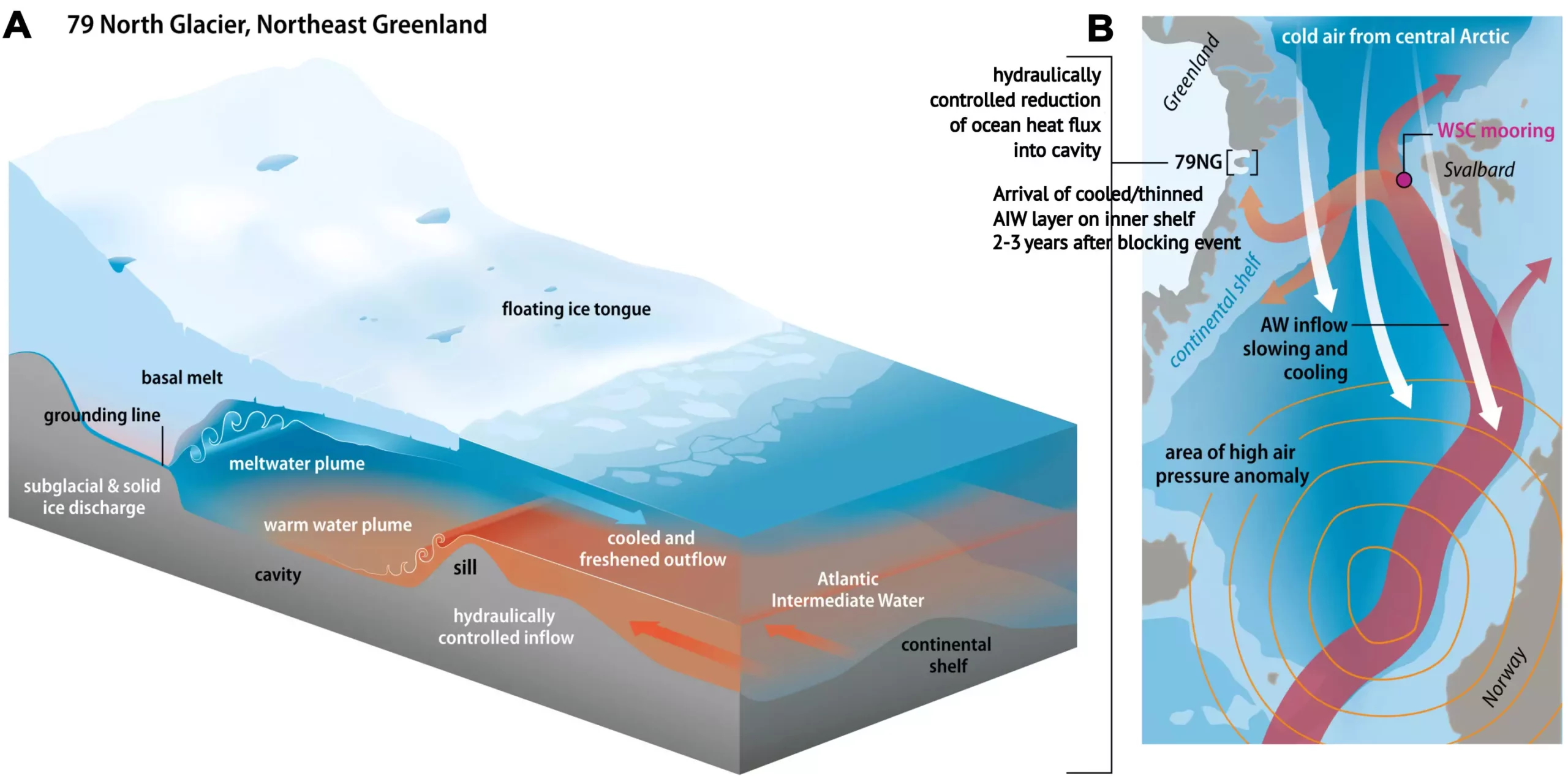Northeast Greenland houses one of the most critical glaciers of our time, the 79° N Glacier, which is the largest floating glacier tongue in the country. This impressive ice formation is increasingly at risk due to the encroaching effects of climate change. Recent findings indicate that warm water from the Atlantic Ocean is melting the glacier from below, exacerbating concerns about the stability of the Greenland Ice Sheet. As the planet continues to warm, the implications for global sea levels and climate systems are alarming.
According to research conducted by scientists at the Alfred Wegener Institute, a puzzling trend has emerged over the past few years. Despite the overarching warming of ocean waters surrounding Greenland, data indicate a decrease in the temperature of the water flowing into the glacier’s cavern between 2018 and 2021. Dr. Rebecca McPherson, the study’s primary author, expressed astonishment at this unexpected cooling, as it contradicts the long-term warming trends observed in the region.
This phenomenon raises critical questions: If ocean temperatures are rising, what accounts for the colder water flowing into the glacier? Understanding this anomaly is crucial since it directly influences how quickly the glacier melts. Colder water indicates less thermal transfer beneath the ice, which could help mitigate melting rates—at least temporarily.
To shed light on the source of this anomalously cold water, researchers collected robust data between the years 2016 and 2021. Using an oceanographic mooring, scientists monitored various parameters, including water temperature and flow speed at the calving front of the glacier. Interestingly, while the water temperatures initially peaked, they reported a 0.65 degrees Celsius drop starting in early 2018.
The analysis linked this cooling trend to atmospheric circulation patterns, particularly the impact of atmospheric blocking. When these high-pressure systems alter typical air flows, they affect ocean currents as well. In this case, a series of blocking events over Europe allowed frigid air from the Arctic to permeate the Fram Strait and the Norwegian Sea. This diverted and slowed the warmer Atlantic water, allowing it to cool more extensively before reaching the glacier, thus providing the mechanism through which lower water temperatures entered the glacier’s cavity.
The implications of these findings extend far beyond the ice itself. The Northeast Greenland Ice Stream, which feeds into the 79° N Glacier, holds the potential to contribute significantly to sea-level rise—up to a meter if it were to melt entirely. The ongoing warming trend of both the atmosphere and oceans has resulted in considerable ice mass loss from the Greenland Ice Sheet, making its stability a pressing issue.
The atmospheric events affecting the region are not merely transient phenomena. They create conditions that can sustain multiyear cooling phases. As temperatures in Fram Strait fluctuate, the resultant water inflow is integral not only to the glacier’s melting dynamics but also to broader climatic implications, such as the extent and thickness of Arctic sea ice.
The AWI team plans to return to the 79° N Glacier in 2025 aboard the research icebreaker Polarstern to observe current conditions and investigate the ongoing changes. Given that water temperatures in Fram Strait are now reported to be rising again, researchers are keenly aware that the glacier’s melting dynamics may change once more, underscoring the need for continuous monitoring and research.
As Dr. McPherson aptly points out, gaining insights into how atmospheric behavior interacts with oceanic conditions is vital for making accurate predictions about glacier stability and associated sea-level rise. Moreover, Prof. Torsten Kanzow emphasizes the significance of the Atlantic Meridional Overturning Circulation (AMOC) as a “thermal conveyor belt” and its potential future weakening, which could have dire repercussions for global climate patterns.
The case of the 79° N Glacier is emblematic of the intricate and often counterintuitive relationships present in our climate system. As we watch the delicate balance of atmospheric patterns and oceanic temperatures unfold, it becomes increasingly clear that understanding these dynamics is imperative for forecasting future changes. Global warming is not a straightforward trend; it is influenced by a host of interconnected variables that warrant vigilant study as we navigate the realities of a warming planet.



Leave a Reply